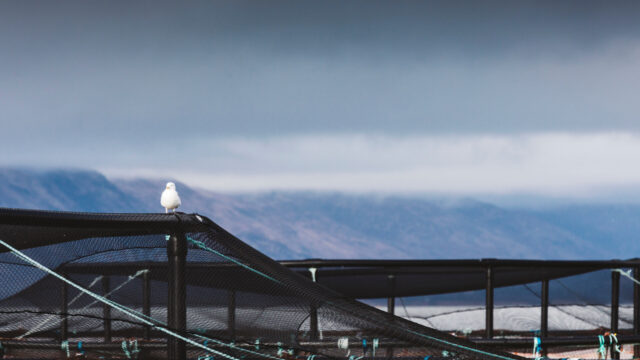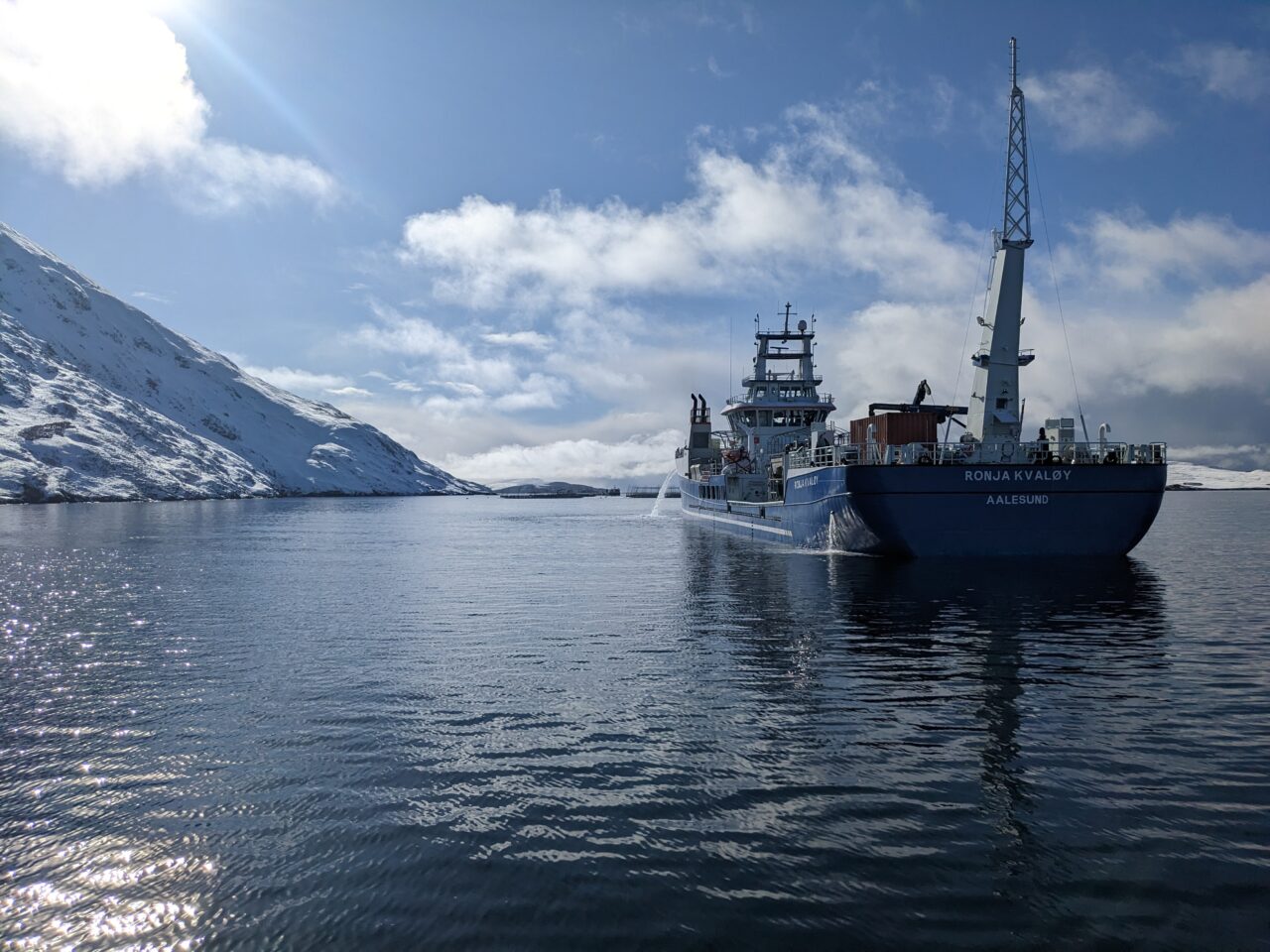
Co-existing with marine life
Our farmers have the privilege of working alongside an array of wild and wonderful marine life.

The changing climate is affecting all forms of farming and salmon farming is no exception.
Seemingly small changes in local weather patterns can have a big impact on growing conditions out at sea.
This includes:
The net effect of these changes, for salmon farmers, can be acute biological challenges resulting in higher than average fish mortalities, lower than forecast harvest volumes and reduced annual survival.
Mitigation measures
Realistic that the environment will continue to change, and determined to mitigate the impact of these changes, we’re putting the lessons learned into action across the full salmon lifecycle.
Watch our quick video below or read on to find out more.

Giving our fish the best start possible has long been core to our farming approach – the scope of what’s possible, however, continues to evolve and grow.
Recent years have seen us embark on several pioneering initiatives to boost egg quality and survival.
Targeted egg supply
We source our eggs from a range of suppliers who specialise in selecting the genetic traits most suited to the Scottish marine environment.
Thanks to a collaboration with one such specialist, AquaGen, this also includes sourcing eggs from fish known to have thrived at our own marine farms around Scotland’s west coast and Northern Isles.
These eggs are hatched and reared at our Barcaldine Hatchery then transferred to sea pens, where, once again, we select the best performers to produce offspring, continuing the cycle.
Our aim? To build a secure supply of high-quality eggs able to resist the health challenges that the changing environment can give rise to.
Bespoke incubation unit
Building on our £58M investment in our Barcaldine Hatchery, work is now underway on a £2M incubation unit adjacent to the main facility that will enable us to receive eggs even earlier in the process.
Currently, we receive fertilised eggs that have developed to the eyed stage.
Once the new unit is completed (expected Q4 ’23) we’ll be able to receive eggs prior to fertilisation, giving us greater control over key welfare factors – water quality, temperature, incubation period included – even earlier in the lifecycle.
£2M upgrade of Girlsta Hatchery
Acquired as part of our purchase of Grieg Seafood Shetland, our Girlsta Hatchery has the capacity to produce up to 3.5M smolts annually.
Now, we’re nearing completion (Q4 ’23) on a £2M upgrade of the facility, targeted at growing bigger, more robust smolts that can better withstand the challenges of the natural environment once at sea.

Complementing our drive to improve egg quality and survival, we’re now looking to boost survival at the next key stage of the salmon lifecycle: the post-smolt stage when young salmon are ready to transition from freshwater to seawater.
Post-smolt facility
Thanks to the advances made in our freshwater farming, we’ve been able to grow smolts to more than twice the average weight achieved via traditional methods, reducing the time required at sea by up to two months.
Now, we’re now looking to shorten the marine cycle even further by investing in a post-smolt facility.
With planning permission to build this new facility at our Barcaldine Hatchery already secured, we’re currently evaluating both sea and land-based options capable of delivering 500g+ smolts and reducing the marine stage by a further three months.
Revising smolt input stocking plans
Across all three of our freshwater hatcheries – Barcaldine, Knock and Girlsta – we have revised our smolt input stocking plans to ensure:

Streamlining our farming estate
Key to enhancing fish survival at sea is ensuring we’re farming in the best locations possible.
Helping us determine these ‘best of the best’ locations, we’ve completed extensive hydrodynamic modelling across our farming estate.
That done, we’re now busy streamlining our existing farming licences into a smaller number of locations, each with fewer pens but of a larger size.
This is enabling us to:
Since 2021, we have consolidated and modernised 14 farms – with another five planned for early 2024.
Exploring the potential of aeration
This farming year has seen us explore the potential of aerations systems to help mitigate some of the impacts of climate change.
Deployed on farm during periods of reduced oxygen, algal blooms or micro-jellyfish events, these systems draw water from the depth of the pen – in other words, away from the surface layers where blooms are typically more abundant – and distribute it upwards in short pulses, boosting the water quality of the whole pen.
Based on positive initial results with regards to fish feed rates, growth and overall welfare, we’re now investing in more of these systems for further exploration and analysis.

Being able to carry out treatments and interventions swiftly can make all the difference to fish health, welfare and survival.
It’s why we’ve been steadily adding to our fleet, resources and capacity.
In 2023 alone we have added:
We’re also looking to introduce new technology which can be added to our freshwater vessels and enable us to gently delouse fish at the same time as protecting their gill health, reducing handling.

Helping ensure we can make the most informed decisions about how best to protect fish health, each of our farms is equipped with new environmental surveillance tools.
Used daily – and even more frequently if a potential threat is detected – these tools provide our farming and fish health teams with an accurate insight into water quality at each location.
Mitigation strategy
In the event of an environmental threat being detected, we have a range of mitigation measures to deploy.
The single best approach, or combination of approaches, will depend on the nature of the challenge, but can include:
If, despite everyone’s best efforts to manage the situation, the environmental challenge persists, then the best decision in the interests of fish welfare may be to harvest out early.

In anticipation of growing our harvest volumes, we have upgraded our two processing and packing facilities.
Following a £2M investment, our ‘facility of the future’ at Lerwick in Shetland has an annual capacity of 50kt – with scope to increase this further.
Meanwhile our South Shian facility near Oban now has an annual capacity of 30kt.
Built into both facilities is spare capacity to ensure that, should we decide to harvest early to protect fish welfare, we are able to move swiftly.